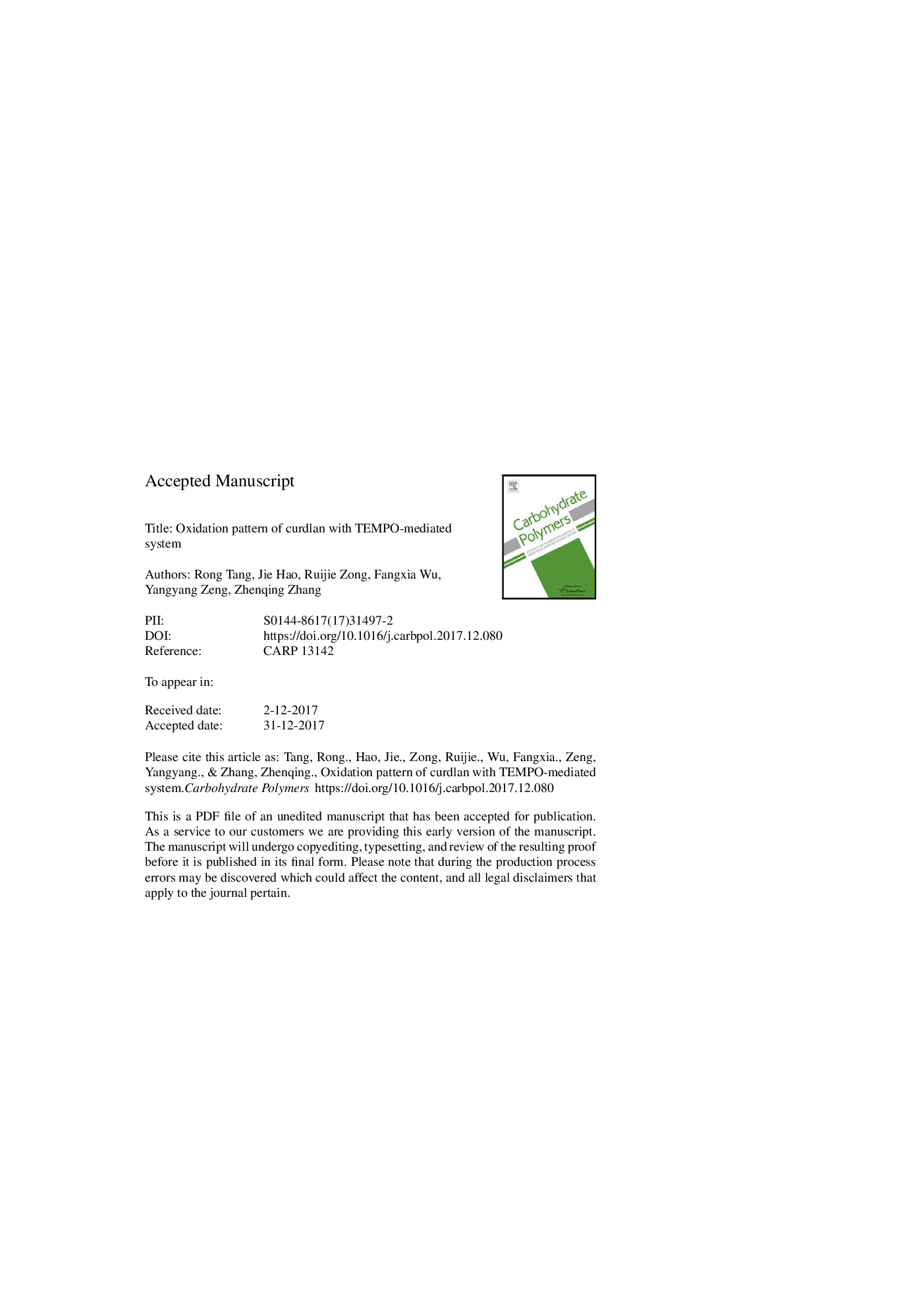| Article ID | Journal | Published Year | Pages | File Type |
|---|---|---|---|---|
| 7783480 | Carbohydrate Polymers | 2018 | 21 Pages |
Abstract
In this study, the TEMPO-mediated (TEMPO/NaBr/NaClO) oxidation pattern of curdlan was investigated through comprehensively structural analysis of the corresponding oxidized products. During the structural analysis, infrared spectroscopy (IR), nuclear magnetic resonance (NMR) spectroscopy, gel permeation chromatography tandem multiple angle laser scattering (GPC-MALS) and ultra-high performance liquid chromatography tandem quadrupole time of flight mass spectrometry (UHPLC-Q/TOF-MS) were applied. As a result, the homogenous β1-3 polyglucuronic acids (MW, 49.8, 29.8 and 7.0â¯kDa) were obtained with proper amount of oxidant (5.36â¯mmol NaClO) at various temperatures (4, 25, 50â¯Â°C), respectively. Compared to the oxidation of 1-4 linked glucan (starch and cellulose) with TEMPO-mediated system at same reaction conditions, higher degree of specific oxidation and less degradation were observed in that of 1-3 linked curdlan. The glycosylation at position 3 could stabilize the sugar ring, which inactivates the non-specific oxidation related hydroxyl groups on the sugar ring. Thus, the TEMPO-mediated system has higher selectivity to oxidize the primary hydroxyl groups of 1-3 linked curdlan and form polyglucuronic acid than those observed in the oxidation of starch and cellulose. In addition, same as those observed in previous work about starch, higher the temperature was used in the oxidation with TEMPO system, higher the activity of oxidant (NaClO solution) was, more non-specific oxidation occurred, and more the degradation were observed.
Keywords
Related Topics
Physical Sciences and Engineering
Chemistry
Organic Chemistry
Authors
Rong Tang, Jie Hao, Ruijie Zong, Fangxia Wu, Yangyang Zeng, Zhenqing Zhang,
